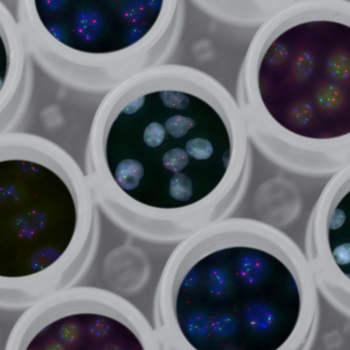‘Gene misbehaviour’ widespread in healthy population
NIHR Cambridge BRC researchers have been involved in a major study published this week in the American Journal of Human Genetics that shows that gene misbehaviour – where genes are active when they should be switched off – is a common phenomenon in the healthy human population.
Data Science and Population Health Theme Lead Professor Michael Inouye, fellow researchers Adam Butterworth, Emanuele Di Angelantonio, John Danesh and former colleague Dirk Paul at AstraZeneca took part in the research led by the Wellcome Sanger Institute that studied the activity of inactive genes in a large, healthy population for the first time.
While gene misexpression has previously been linked to several rare diseases, it is not known how often or why this may happen in the general population – but this study showed that misexpression is widespread across samples and involved more than half of the genes that should be inactive.
The surprising finding sheds new light on how our genetic code operates – and the approach could be used in future research to investigate, diagnose and develop treatments for various complex diseases caused by misexpression.
Study author Dr Katie Burnham at the Wellcome Sanger Institute said:
“The work of this pioneering large-scale study is testament to the incredible ‘genomics ecosystem’ in Cambridge that brought together experts from the Sanger Institute, the University of Cambridge and AstraZeneca.
“The findings open avenues for research into gene misexpression across different tissues, to understand its role in various diseases and potential treatments.”
In this study, researchers analysed blood samples from 4,568 healthy individuals from the INTERVAL study 3. They used advanced RNA sequencing techniques to measure gene activity and whole genome sequencing to identify genetic changes behind irregular gene activity.
Dr. Anne Forde, Patient and Public Involvement and Engagement Manager at the Cardiovascular Epidemiology Unit, University of Cambridge, said: “This research was based on the 50,000 population cohort recruited for INTERVAL on blood donation frequency, and we are grateful to the NIHR and the Cambridge BRC for your ongoing support and collaboration.”
- ‘Misexpression of inactive genes in whole blood is associated with nearby rare structural variants’, T. Vanderstichele et al. (2024), American Journal of Human Genetics.



